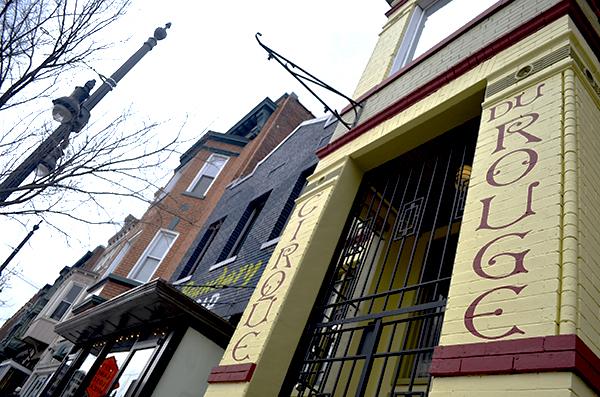Cirque Du Rouge, a three-story tattoo parlor in Northeast D.C. filled with tribal masks, taxidermied animals and a live lizard named Smaug, is closed on Mondays. But sometimes that day off turns into a tattoo session for fellow artists from other District shops.
While tattoo shops across the city used to viciously compete for a small customer base – even lighting each other’s stores on fire, owner Cynthia Rudzis said – they are now building a culture of collaboration to meet a swelling demand for ink.
“We all recognize each other as being very individual artists, very individual illustrators, so there’s a better bond between the artists, which is really nice because it just makes us better,” Rudzis said.
Not only has the interparlor dynamic shifted, but so has the clientele.
Tattooing is an art form usually associated with young, reckless college students getting “best friend tattoos” or rebelling against their parents. Thirty-six percent of people between the ages of 18 and 25 have tattoos, according to a study by the Pew Research Center.
But the city’s immense diversity of tattoo-seeking clients is what makes Eric Doyle, an artist at Jinx Proof Tattoos, say that D.C. is his favorite city to work in.
“There’s a really interesting mix of people from lots of different walks of life and a staggering number of professionals,” Doyle said.
Many of Doyle’s clients are attorneys, while Rudzis said hers have included lobbyists and lawyers from Capitol Hill. And they aren’t all young, either. Rudzis said her clients are most often over the age of 30, with her oldest being 72 years old.
With the diverse clientele comes a diverse demand for tattoos, and not every shop is well-versed in all styles. If she has a client looking for a particular style and Rudzis knows someone in the city who does it better, she said she will often point the client toward the other artist.
This has not always been the case, Rudzis said, recalling a time when tattoo parlors would literally fight for business because there simply wasn’t enough skin to be inked. D.C. tattoo artists once saw each other more as enemies than associate artists.
With the growing popularity of tattoos, aided somewhat by popular television shows like “L.A. Ink” and “Miami Ink,” stigmas and hesitations about the art are fading away, especially in the professional sector.
Lars Krutak, a tattoo anthropologist who works at the Smithsonian Institution and studies indigenous tattooing around the world, said that the areas he visits, though far from D.C., are experiencing similar growth.
“There are tattoo magazines in seemingly every country, there are national tattoo conventions basically every week or every couple of weeks around the world, so it’s really evolved through the last 30 years into this multinational institution,” Krutak said. “It’s a billion-dollar industry.”
There has even been an effort in D.C. to rein in the body art industry, with a proposed law that would have required individuals to wait 24 hours before getting a tattoo, which council members said would lower the chances of blood diseases like hepatitis B and HIV.
But the influx of clients comes at a price.
“I hear tattooers all the time talking about how they almost miss the days when this was taboo and underground, because everybody wants a tattoo now and sometimes everybody doesn’t quite understand that tattoos do have limitations,” Rudzis said.
Rudzis partly blames social media, which often shows misleading images of clients’ tattoos that are actually freshly done and unweathered. It’s also made tattoos more popular in places that do not hold ink well, like between the fingers or on palms.
Although the web can be a tattooer’s worst enemy, Rudzis said it has also given way to increased communication between artists who are farther away and can also be used to help figure out a particular client’s requests.
In some cases, Rudzis will ask a client to make a Pinterest account and click anything that stands out – from tattoos to drawings – because the smallest things can give hints into the client’s character and create truly representative pieces.
“I could tattoo a paper clip on you and if you say your paper clip means growth, then guess what that paper clip means? Growth. It’s whatever you want. You can put any kind of symbolism into any image, so you don’t have to go by standards,” Rudzis said.







